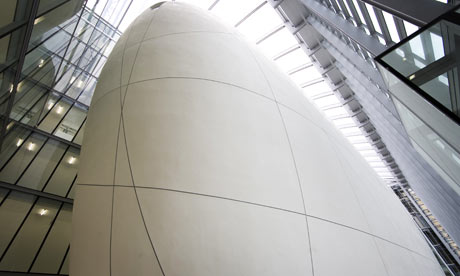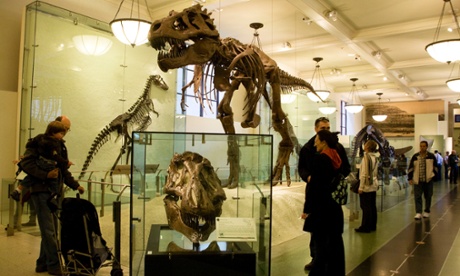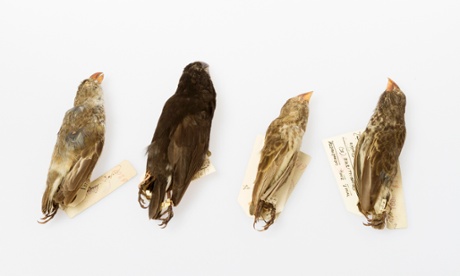One of the most startling additions to any British museum, the new £78m "cocoon" at the Natural History Museum in London – an enigmatic white blobby form eight storeys high and 65m long inside a giant glass box – will open to the public on 15 September, it was announced yesterday. Michael Dixon, the director of the museum, said he hopes the new building – properly known as the Darwin Centre, but dubbed the cocoon even by staff – will leave visitors "with a real sense of awe and wonder at nature".
The museum boasts one of the largest botanical collections in the world, at more than 6m specimens. The new building will bring millions out of store and into the public gaze, from specimens collected by Charles Darwin himself to those discovered on recent safaris to harvest new species from rainforests, mountain slopes and underwater.
Amazingly, the museum's scientists believe that 90% of all living things have yet to be discovered, named and classified – and that every year, at least 200 species become extinct without ever being studied.
Now, for the first time, these scientists – as well as their specimens – will also be on display. The cocoon, created to shelter more than 20m plant and animal specimens, also contains laboratories for 220 people (both staff and visiting experts) whose work was formerly hidden away within the cliffs of stone of the South Kensington institution. Microphone links will allow visitors not just to gaze in awe but to question the scientists about what they are doing. Current projects include work on mosquitos to try to solve the worldwide scourge of malaria, and on new crops that could one day end world hunger.
Most of the insects, trapped in the wild and popped into a fume-filled bottle that both kills and preserves them, are dried and displayed on a pin, just as in Victorian times.
The oldest plant specimens survive dried and pressed, including a bound herbarium once owned by Sir Hans Sloane, whose enormous collections formed the basis of both the British Museum and the Natural History Museum. One of the plants he brought back changed the British diet for ever: a cocoa plant collected in Jamaica in 1689. He saw local people boiling the seeds to make a drink but found it too bitter, and so added milk and sugar. When he returned to England he sold the recipe, and the rest was milk-chocolate history.
The displays will include 20 iconic pieces regarded as among the treasures of the museum, including a specimen of the famous "vegetable lamb of Tartary" – whose cottony growth sparked the cherished legend (faithfully reproduced in books by generations of botanists) of a plant that bore real living lambs as fruit: disappointingly, it's just a type of fern.
The cocoon's startling design, by Danish architects CF Møller, beat 69 other international entries in a competition for a major extension to one of the best-loved buildings in London, Alfred Waterhouse's 1870s Romanesque masterpiece. Its new cocoon is both a symbol of the world of science, and a way of protecting and shading its astonishing contents.
To book ahead for a free public tour, call 020 7942 5725. Online booking starts in mid-August, www.nhmshop.co.uk











